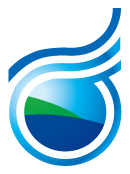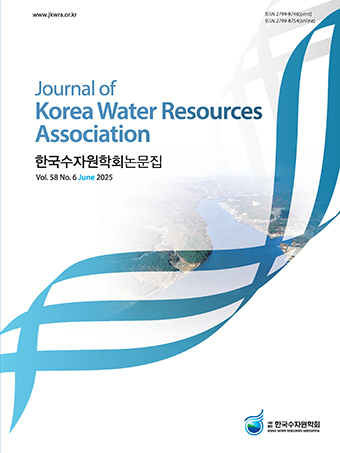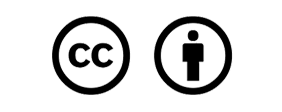Instruction to Authors (Editorial policies)
Instruction to Authors (Editorial policies)
1. General information
Journal of Korean Water Resources Association (JKWRA) is the official journal of the Korean Water Resources Association (KWRA). Anyone who would like to submit a manuscript is advised to carefully read the aims and scope section of this journal. Manuscripts should be prepared for submission to JKWRA according to the following instructions. It also adheres completely to the Principles of Transparency and Best Practice in Scholarly Publishing (joint statement by COPE, DOAJ, WAME, and OASPA; http://doaj.org/bestpractice) if otherwise not described below.
2. Copyright and Creative Commons Attribution license
A submitted manuscript, when published, will become the property of the journal. Copyrights of all published materials are owned by KWRA. The Creative Commons Attribution License available from: http://creativecommons.org/licenses/by/4.0/ is also in effect.
Research and publication ethics
3. Research and publication ethics
The journal adheres to the ethical guidelines for research and publication described in Guidelines on Good Publication (http://publicationethics.org/resources/guidelines) and the JKWRA Guidelines (http://www.jkwra.or.kr).
1. Authorship
Authorship credit should be based on 1) substantial contributions to conception and design, acquisition of data, and/or analysis and interpretation of data; 2) drafting the article or revising it critically for important intellectual content; 3) final approval of the version to be published; and 4) agreement to be accountable for all aspects of the work in ensuring that questions related to the accuracy or integrity of any part of the work are appropriately investigated and resolved. Every author should meet all of these four conditions. After the initial submission of a manuscript, any changes whatsoever in authorship (adding author(s), deleting author(s), or re-arranging the order of authors) must be explained by a letter to the editor from the authors concerned. This letter must be signed by all authors of the paper. Copyright assignment must also be completed by every author.
- ●Corresponding author and first author: JKWRA does not allow multiple corresponding authors for one article. Only one author should correspond with the editorial office and readers for one article. JKWRA does accept notice of equal contribution for the first author when the study was clearly performed by co-first authors.
- ●Correction of authorship after publication: JKWRA does not correct authorship after publication unless a mistake has been made by the editorial staff. Authorship may be changed before publication but after submission when an authorship correction is requested by all of the authors involved with the manuscript.
2. Originality, plagiarism and duplicate publication
Submitted manuscripts must not have been previously published or be under consideration for publication elsewhere. No part of the accepted manuscript should be duplicated in any other scientific journal without the permission of the Editorial Board. Submitted manuscripts are screened for possible plagiarism or duplicate publication by Similarity Check upon arrival. If plagiarism or duplicate publication is detected, the manuscripts may be rejected, the authors will be announced in the journal, and their institutions will be informed. There will also be penalties for the authors.
A letter of permission is required for any and all material that has been published previously. It is the responsibility of the author to request permission from the publisher for any material that is being reproduced. This requirement applies to text, figures, and tables.
3. Conflict of interest statement
The corresponding author must inform the editor of any potential conflicts of interest that could influence the authors’ interpretation of the data. Examples of potential conflicts of interest are financial support from or connections to companies, political pressure from interest groups, and academically related issues. In particular, all sources of funding applicable to the study should be explicitly stated.
4. Statement of human and animal right
Clinical research should be done in accordance of the Ethical Principles for Medical Research Involving Human Subjects, outlined in the Helsinki Declaration of 1975 (revised 2013), available from: https://www.wma.net/policies-post/wma-declaration-of-helsinki-ethical-principles-for-medical-research-involving-human-subjects/. Clinical studies that do not meet the Helsinki Declaration will not be considered for publication. Human subjects should not be identifiable, such that patients’ names, initials, hospital numbers, dates of birth, or other protected healthcare information should not be disclosed. For animal subjects, research should be performed based on the National or Institutional Guide for the Care and Use of Laboratory Animals, and the ethical treatment of all experimental animals should be maintained.
5. Statement of informed consent and institutional review board approval
Copies of written informed consent documents should be kept for studies on human subjects, which includes identifiable information or sensitive information. For clinical studies of human subjects, a certificate, agreement, or approval by the Institutional Review Board (IRB) of the author’s institution is required. If necessary, the editor or reviewers may request copies of these documents to resolve questions about IRB approval and study conduct.
6. Process for managing research and publication misconduct
When the journal faces suspected cases of research and publication misconduct such as redundant (duplicate) publication, plagiarism, fraudulent or fabricated data, changes in authorship, an undisclosed conflict of interest, ethical problems with a submitted manuscript, a reviewer who has appropriated an author’s idea or data, complaints against editors, and so on, the resolution process will follow the flowchart provided by the Committee on Publication Ethics (http://publicationethics.org/resources/flowcharts). The discussion and decision on the suspected cases are carried out by the Editorial Board.
7. Process for handling cases requiring corrections, retractions, and editorial expressions of concern
Cases that require editorial expressions of concern or retraction shall follow the COPE flowcharts available from:http://publicationethics.org/resources/flowcharts. If correction needs, it will follow the JKWRA Recommendation for Corrections, Retractions, Republications and Version Control available.
Honest errors are a part of science and publishing and require publication of a correction when they are detected. Corrections are needed for errors of fact. Minimum standards are as follows: First, it shall publish a correction notice as soon as possible detailing changes from and citing the original publication on both an electronic and numbered print page that is included in an electronic or a print Table of Contents to ensure proper indexing; Second, it shall post a new article version with details of the changes from the original version and the date(s) on which the changes were made through CrossMark; Third, it shall archive all prior versions of the article. Fourth, previous electronic versions shall prominently note that there are more recent versions of the article via CrossMark.
8. Editorial responsibilities
The Editorial Board will continuously work to monitor and safeguard publication ethics: guidelines for retracting articles; maintenance of the integrity of the academic record; preclusion of business needs from compromising intellectual and ethical standards; publishing corrections, clarifications, retractions, and apologies when needed; and excluding plagiarism and fraudulent data. The editors maintain the following responsibilities: responsibility and authority to reject and accept articles; avoiding any conflict of interest with respect to articles they reject or accept; promoting publication of corrections or retractions when errors are found; and preservation of the anonymity of reviewers.
4. Author qualifications, language requirement, and reporting guideline
1. Author qualifications
Any researcher throughout the world can submit a manuscript if the scope of the manuscript is appropriate.
2. Language
Manuscripts should be submitted in good scientific Korean and English.
3. Reporting guidelines for specific study designs
Research reports frequently omit important information. As such, reporting guidelines have been developed for a number of study designs that some journals may ask authors to follow. Authors are encouraged to also consult the reporting guidelines relevant to their specific research design. A good source of reporting guidelines is the EQUATOR Network (http://www.equator-network.org/home/) and the United States National Institutes of Health/National Library of Medicine (http://www.nlm.nih.gov/services/research_report_guide.html).
5. Submission and peer review process
1. Submission
All manuscripts should be submitted via e-submission system available from: https://submission.jkwra.or.kr/. If any authors have difficulty in submitting via e-submission system, please send a manuscript to kwra@kwra.or.kr by the corresponding author.
2. Peer review process
JKWRA reviews all manuscripts received. A manuscript is first reviewed for its format and adherence to the aims and scope of the journal. If the manuscript meets these two criteria, it is checked for plagiarism or duplicate publication with Similarity Check. After confirming its result, it is dispatched to three investigators in the field with relevant knowledge. Assuming the manuscript is sent to reviewers, JKWRA waits to receive opinions from at least two reviewers. In addition, if deemed necessary, a review of statistics may be requested. The authors’ names and affiliations are removed during peer review (double-blind peer review). The acceptance criteria for all papers are based on the quality and originality of the research and its scientific significance. Acceptance of the manuscript is decided based on the critiques and recommended decision of the reviewers. An initial decision will normally be made within 4 weeks of receipt of a manuscript, and the reviewers’ comments are sent to the corresponding author by e-mail. The corresponding author must indicate the alterations that have been made in response to the reviewers’ comments item by item. Failure to resubmit the revised manuscript within 4 weeks of the editorial decision is regarded as a withdrawal. If further revision period is required, author should contact editorial office through email available from: kwra@kwra.or.kr. A final decision on acceptance/rejection for publication is forwarded to the corresponding author from the editor.
3. Peer review process for handling submissions from editors, employees, or members of the editorial board
All manuscripts from editors, employees, or members of the editorial board are processed same to other unsolicited manuscripts. During the review process, submitters will not engage in the selection of reviewers and decision process. Editors will not handle their own manuscripts although they are commissioned ones.
6. Manuscript preparation
1. General requirements
- ●The main document with manuscript text and tables should be prepared in an MS Word (docx) or RTF file format.
- ●The manuscript should be double spaced on 21.6×27.9 cm (letter size) or 21.0×29.7 cm (A4) paper with 3.0 cm margins at the top, bottom, right, and left margin.
- ●All manuscript pages are to be numbered at the bottom consecutively, beginning with the abstract as page 1. Neither the author’s names nor their affiliations should appear on the manuscript pages.
- ●The authors should express all measurements according to International System (SI) units with some exceptions such as seconds, mmHg, or °C.
- ●Only standard abbreviations should be used. Abbreviations should be avoided in the title of the manuscript. Abbreviations should be spelled out when first used in the text—for example, extensible markup language (XML)—and the use of abbreviations should be kept to a minimum.
- ●The names and locations (city, state, and country only) of manufacturers should be given.
- ●When quoting from other sources, a reference number should be cited after the author’s name or at the end of the quotation.
Manuscript preparation is different according to the publication type, including original articles, reviews, case studies, essays, training materials, editorials, book reviews, correspondence, and video clips. Other types are also negotiable with the Editorial Board.
2. Original articles
Original articles are reports of basic investigations. The manuscript for an original article should be organized in the following sequence: title page, abstract and keywords, main text (introduction, methods, results, and discussion), conflict of interest, acknowledgments, references, tables, figure legends, and figures. The figures should be received as separate files. Maximum length: 2,500 words of text (not including the abstract, tables, figures, and references)
- ●Title page: The following items should be included on the title page: 1) the title of the manuscript, 2) author list, 3) each author’s affiliation, 4) the name and e-mail address of the corresponding author, 5) when applicable, the source of any research funding and a list of where and when the study has been presented in part elsewhere, and 6) a running title of fewer than 50 characters.
- ●Abstract and keywords: The abstract should be one concise paragraph of less than 200 words in a structured format including purpose, methods, results, and conclusion. Abbreviations or references are not allowed in the abstract. Up to 5 keywords should be listed at the bottom of the abstract to be used as index terms.
- ●Introduction: The purpose of the investigation, including relevant background information, should be described briefly. Conclusions should not be included in the Introduction.
- ●Methods: The research plan, materials (or subjects), and methods used should be described in that order. The names and locations (city, state, and country only) of manufacturers of equipment and software should be given. Methods of statistical analysis and criteria for statistical significance should be described.
- ●Results & discussion: The results should be presented in logical sequence in the text, tables, and figures. If resulting parameters have statistical significance, P-values should be provided, and repetitive presentation of the same data in different forms should be avoided. The results should not include material appropriate for the discussion.
Discussion seeks ways to discover new insights by trying various discussions with the content drawn from the results. - ●Conclusion: Observations pertaining to the results of the research and other related work should be interpreted for readers. New and important observations should be emphasized rather than merely repeating the contents of the results. The implications of the proposed opinion should be explained along with its limits, and within the limits of the research results, and the conclusion should be connected to the purpose of the research. In a concluding paragraph, the results and their meaning should be summarized.
- ●ORCID (Open Researcher and Contributor ID): ORCID of all authors should be described.
- ●Conflict of interest: Any potential conflict of interest that could influence the authors’ interpretation of the data, such as financial support from or connections to companies, political pressure from interest groups, or academically related issues, must be stated.
- ●Acknowledgments: All persons who have made substantial contributions, but who have not met the criteria for authorship, are to be acknowledged here. All sources of funding applicable to the study should be stated here explicitly.
- ●Appendix: If any materials are not enough to be included in the main text such as questionnaires, they can be listed in the Appendix.
- ●Supplementary materials: If there are any supplementary materials to help the understanding of readers or too great amount data to be included in the main text, it may be placed as supplementary data. Not only text, audio or video files, but also data files should be added here.
- ●References: In the text, references should be cited with Arabic numerals in brackets, numbered in the order cited. In the references section, the references should be numbered and listed in order of appearance in the text. Types of references described below should follow.
Journal articles:
-
Rahuel, J.L., Holly, F.M., Chollet, J.P., Belleudy, P.J., and Yang, G. (1989). “Modeling of river bed evolution for bedload sediment mixtures.” Journal of Hydraulic Engineering, ASCE, Vol. 115, No. 11, pp. 1521-1542.
Books and book chapters:
-
Lewellen, W.S. (1977). “Use of invariant modeling.” Handbook of turbulence, Edited by Frost, W., Vol. 1, Plenum Press, New York, N.Y., pp. 237-280.
Online sources:
-
Burka, L. P. (2013). “A hypertext history of multi-user dimensions.” MUD history. Accessed December 5, 2013. http://www.ccs.neu.edu.
Conference papers:
-
Graves, A.L., and Gooch, R.S. (1986). “Central Arizona Project start up.” Proceedings Water Forum '86: World Water Issues in Evolution, ASCE, New York, N.Y. Vol. 1, pp. 546-551.
Scientific and technical reports:
-
ASCE. (2016). Minimum design loads and associated criteria for buildings and other structures, Standard ASCE/SEI 7-16. Reston, VA: ASCE.
Dissertations:
-
Kim, S. N. (1991). "Statis response of bridge superstructures made of fiber reinforced plastic." M.S. thesis, Seoul: Seoul National Univ., Republic of Korea.
- ●Tables: Tables are to be numbered in the order in which they are cited in the text. A table title should concisely describe the content of the table so that a reader can understand the table without referring to the text. Each table must be simple and typed on a separate page with its heading above it. Explanatory matter is placed in footnotes below the tabular matter and not included in the heading. All non-standard abbreviations are explained in the footnotes. Footnotes should be indicated by a), b), c), .... Statistical measures such as SD or SE should be identified. Vertical rules and horizontal rules between entries should be omitted.
- ●Figures and legends for illustrations: Figures should be numbered, using Arabic numerals, in the order in which they are cited. Each figure should be uploaded as a single image file in either uncompressed EPS, TIFF, PSD, JPEG, and PPT format over 600 dots per inch (dpi) or 3 million pixels (less than 6 megabytes). Written permission should be obtained for the use of all previously published illustrations (and copies of permission letters should be included). In the case of multiple prints bearing the same number, English letters should be used after the numerals to indicate the correct order (e.g. Fig. 1A; Fig. 2B, C).
3. Review Articles
Review articles are intended to provide comprehensive analyses of specific topics. The manuscript should be structured as follows: title page, abstract and keywords, main text (introduction, body, and conclusion), conflict of interest, acknowledgments, references, tables, figure legends, and figures. The abstract should be unstructured and must not exceed 200 words. The main text, excluding references, tables, and figures, should not exceed 5,000 words.
4. Technical Notes
Technical notes are intended to report practical cases encountered during the research process. Although they follow the format of a research article, the total length is limited to ten pages. Typical examples include the introduction of new technologies, systems, or programs. The manuscript should be structured as follows: title page, abstract and keywords, main text (introduction, body, and conclusion), conflict of interest, acknowledgments, references, tables, figure legends, and figures. The abstract should be unstructured and limited to a maximum of 200 words. The main text, excluding references, tables, and figures, must not exceed 2,500 words.
5. Policy Notes
Policy notes are intended to report cases that require policy improvement in various fields of civil and environmental engineering. Although they follow the format of a research article, the total length is limited to ten pages. Typical examples include proposals for legal or institutional reforms and policy recommendations. The manuscript should be structured as follows: title page, abstract and keywords, main text (introduction, body, and conclusion), conflict of interest, acknowledgments, references, tables, figure legends, and figures. The abstract should be unstructured and limited to a maximum of 200 words. The main text, excluding references, tables, and figures, must not exceed 2,500 words.
6. Comment and reply policy
Comment and reply (letters to the editor) may be in response to a published article, or a short, free-standing piece expressing an opinion. Comment and reply should be no longer than 1,000 words of text.
7. Final preparation for publication
1. Final version
After the paper has been accepted for publication, the author(s) should submit the final version of the manuscript. The names and affiliations of the authors should be double-checked, and if the originally submitted image files were of poor resolution, higher resolution image files should be submitted at this time. Color images must be created as CMYK files. The electronic original should be sent with appropriate labeling and arrows. The EPS, TIFF, Adobe Photoshop (PSD), JPEG, and PPT formats are preferred for submission of digital files of photographic images. Symbols (e.g., circles, triangles, squares), letters (e.g., words, abbreviations), and numbers should be large enough to be legible on reduction to the journal’s column widths. All of the symbols must be defined in the figure caption. If the symbols are too complex to appear in the caption, they should appear on the illustration itself, within the area of the graph or diagram, not to the side. If references, tables, or figures are moved, added, or deleted during the revision process, they should be renumbered to reflect such changes so that all tables, references, and figures are cited in numeric order.
2. Manuscript corrections
Before publication, the manuscript editor may correct the manuscript such that it meets the standard publication format. The author(s) must respond within 2 days when the manuscript editor contacts the author for revisions. If the response is delayed, the manuscript’s publication may be postponed to the next issue.
3. Galley Proof
The author(s) will receive the final version of the manuscript as a PDF file. Upon receipt, within 2 days, the editorial office (or printing office) must be notified of any errors found in the file. Any errors found after this time are the responsibility of the author(s) and will have to be corrected as an erratum.
8. Page charges or article processing charges
All published papers incur page charges at the following rate:
|
Regular Papers |
Pages 1-8 ... 150,000 KRW |
Pages 9-15 ... 20,000 KRW per page |
Pages 16 and beyond Not Accepted |
|
Urgent Papers |
Pages 1-8 ... 250,000 KRW |
||
|
Technical Note Policy Note |
Pages 1-6 ... 100,000 KRW |
Pages 7-10 ... 20,000 KRW per page |
Pages 11 and beyond Not Accepted |
Contact Us
Editor-in-Chief: Chung, Il-Moon
Senior Research Fellow
Department of Hydro Science and Engineering Research
Korea Institute of Civil Engineering and Building Technology (KICT)
Professor, University of Science & Technology (UST)
283, Goyangdae-Ro, Ilsanseo-Gu, Goyang-Si,
Gyeonggi-Do, 411-712, KOREA
Tel: +82-31-9100-334
Mobile: +82-10-2221-7002
E-mail : imchung@kict.re.kr
Editorial Office: Journal of Korea Water Resources Association
#302 Han-Shin Living Tower,
237 Hyoryeong-ro, Seocho-gu, Seoul 06671, Korea
Tel: +82-2-561-2732, Fax: +82-2- 561-2733
E-mail: kwra@kwra.or.kr


 Journal of Korea Water Resources Association
Journal of Korea Water Resources Association










